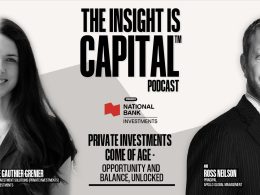The unterest rate, not an interest rate
by Will Ortel, CFA Institute
There was a lot riding on the US Federal Reserve’s decision on interest rates the other day. Arguably everything, in fact.
Last time I talked about the Fed here, I suggested that the extreme level of uncertainty about long-term interest rates effectively breaks capitalism.
Surely we can agree that’s kind of a big deal.
But with this decision, there were two things hanging in the balance that are perhaps more important than the global capitalist system.
The first: a nerve wracking bet between yours truly and the excellent Paul McCaffrey, the complexity of which we hadn’t fully anticipated. Amid a context of sharply rallying bonds and equities, we couldn’t break a $10 bill to properly settle the wager. Chaos happens when trades don’t settle. All we can hope is that somebody walks by with two $5s to avert any potential systemic implications.
The second: the fate of the English language itself. It has always been hard to love markets if you also love words and clear expression. Some of the jargon dreamed up by investment professionals can seem like it was designed to troll any humanities major who might be hanging around. This Google search amply documents the breadth of the issue up until now. The number of alphabet soup abbreviations — ZIRP, IOER, and TDF, for example — has long compounded at a rate far greater than most investors will ever experience.
But there’s a new piece of lingo on the horizon that crosses the line:
Negative Interest Rates
It’s time to stop saying this. Forever. And it’s not a small or merely rhetorical point.
Sure, “negative interest rates” doesn’t really roll off the tongue in the same way as theta burn, convexity, or some other acceptable piece of jargon. And it’s never a good idea to use three words when two will do. But that’s not why this turn of phrase is insidious.
It’s insidious because it has the potential to make you think wrong. Paying somebody to use your money for a while and being paid to lend your money for a while are fundamentally different transactions to engage in. And there are at least a few folks on the Fed’s board who believe it’s possible investors are going to wind up doing the former pretty soon.
Just look at the dot plot:
The Fed’s June Dots vs September Dots http://t.co/KvnFXQp0xP pic.twitter.com/usIkaLeT9b
— BI Chart of the Day (@chartoftheday) September 17, 2015
See those two dots in the updated version below 0.00? They mean that there are up to two voting members of the Fed who predict banks will be paying each other -0.25% for overnight borrowings at the end of 2015 and 2016.
That’s an Unterest Rate, Not an Interest Rate
And it’s not just a matter of style. I’m calling it something different so that we can collectively realize it will actually be something different.
To illustrate that, I’ll interview myself a little bit:
- Will an unterest rate environment persist for a long time? I don’t know. It’s never happened before.
- What happens to risk appetites in an unterest rate environment? I don’t know. It’s never happened before.
- How can retirees safely generate income in an unterest rate environment? I don’t know. It’s never happened before.
So stay vigilant. We may be entering new and uncharted waters.
If you liked this post, don’t forget to subscribe to the Enterprising Investor.
Copyright © CFA Institute
All posts are the opinion of the author. As such, they should not be construed as investment advice, nor do the opinions expressed necessarily reflect the views of CFA Institute or the author’s employer.















